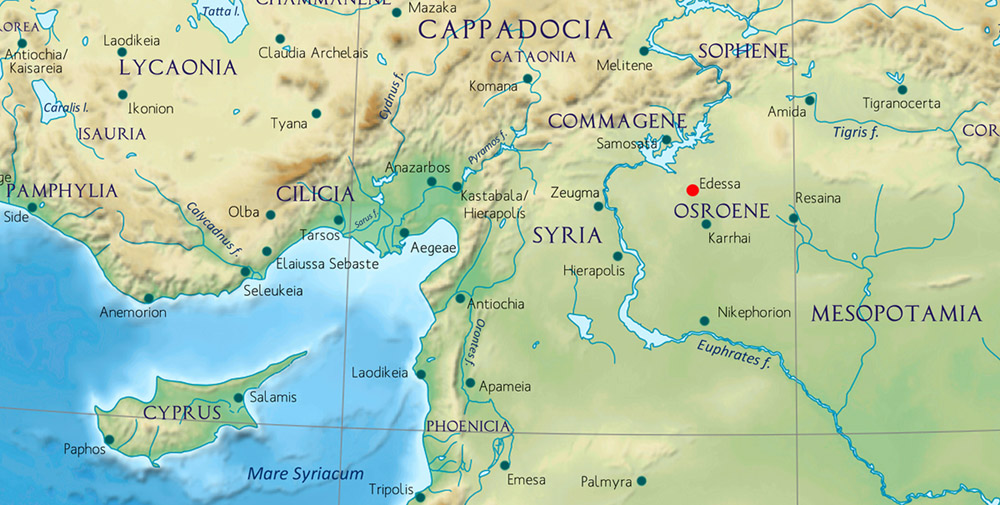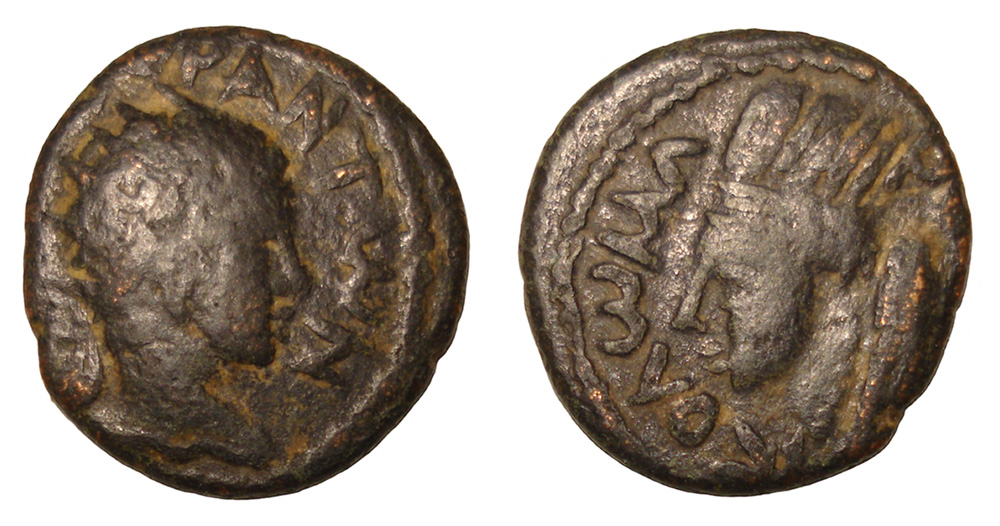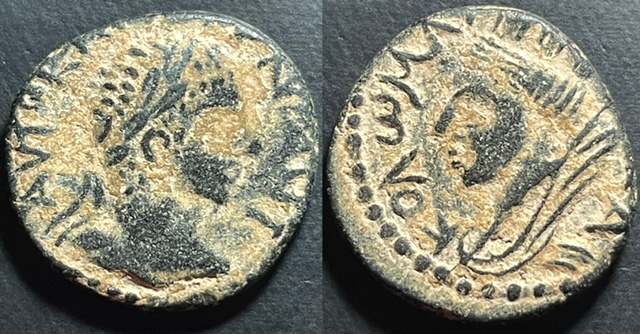I almost passed on these initially unremarkable looking Elagabalus coins had it not been for the unusual depictions of Tyche on the reverses. Looking into them a little closer, one had a laureate bust obverse and the other a radiate bust. There were ten examples of the laureate head obverses in the RPC online database;
https://rpc.ashmus.ox.ac.uk/coins/6/7776 , and only two of the radiate head;
https://rpc.ashmus.ox.ac.uk/coins/6/7774 .
The original city was known as Urhay, Urhai or Orhay, later to be refounded by Seleucus I Nicator as Edessa. Edessa from an ancient Macedonian capital, the name apparently meaning "city of water". The name was later changed, probably by Antiochus IV Epiphanes (175-64 B.C.E.), to Antiochia on the Callirhoe (a local fishpond), but after his reign it reverted to Edessa and Urhai.
The city also had other names, as per this abstract from the Wiley Online Library:
Edessa (ancient Adme, Aramaic Urhoy, modern Urfa), once hailed as the "the mother of all the cities of Mesopotamia," lies to the north of Harran near the Balikh River, a branch of the upper Euphrates.

Edessa extracts from Worldhistory Org:
Early History
Edessa, then known as Adme, was an ancient settlement, chosen for its advantageous position on a fertile plain with abundant water from a nearby branch of the Euphrates River while also being protected by a ring of hills to the south. The site was a cult centre for the moon god mentioned in both neo-Assyrian and neo-Babylonian sources. Seleucus I (358-281 BCE), one of Alexander the Great's Macedonian commanders who established the Seleucid Empire (312-63 BCE) in Asia, re-founded the city as a military settlement in 304 BCE. Seleucus gave it the new name of Edessa, after the original name of the ancient capital of Macedonia. In the 2nd century BCE, Edessa became the capital and royal residence of Osroene, a region of the Seleucid Empire in north-west Mesopotamia which declared itself an independent kingdom (traditional date 132 BCE). The population of Edessa, like Osroene in general at this time, was a mix of Greeks, Parthians, and Semitic Arameans. Although the kingdom was, in reality, a vassal state of Parthia, it proved a useful buffer zone between that empire and the emerging Roman Empire.
Roman Edessa
As the power of Rome grew, Osroene became a dependency within the Roman Empire, with Pompey the Great (106-48 BCE) notably granting King Abgar II (r. 68-53 BCE) an enlarged territory. The religion practised in Osroene was pagan, but much closer to that of Parthia than Rome. Emperor Trajan (r. 98-117 CE) was a notable guest, visiting Edessa on his tour of the region when he was hosted by King Abgar VII (r. 109-116 CE). Then, after the successful campaigns of the emperor Lucius Verus (r. 161-169 CE), who sacked Edessa, the city was made into a Roman colony and, thereafter, prospered, even minting its own coinage. The city once again benefitted from its favourable position on trade routes, being on the only official route between the Roman and Parthian Empires (247 BCE - 224 CE). Roman emperor Caracalla (r. 211-217 CE) was rather less friendly and summoned Abgar VIII to Rome and imprisoned him in the hopes of turning Edessa into a useful platform from which to launch an invasion of Parthia, but nothing came of the plan.
In 242 CE Edessa became the capital of the Roman province of Osroene. The Sasanian Empire (224-651 CE), the successor to the Parthians, was equally ambitious for new territory, and in 260 CE Shapur I (r. 240-272 CE) attacked Antioch and then captured Roman emperor Valerian (r. 253-260 CE) at Edessa when he was seeking peace terms in one of Rome's most embarrassing military defeats in its long history.

Edessa, Mesopotamia. Elagabalus (218-222 AD).
Obverse: Laureate bust of Elagabalus right. Obverse inscription: AYTO KAIC MAP AYP ANTωN. Reverse: Turreted head of Tyche left. Reverse Inscription: [K]OΛω MAP [EΔECCA]. Bronze. Diameter: 17 mm. Weight: 2.68 gr.
Reference: RPC VI, 7776 (temporary)

Edessa, Mesopotamia. Elagabalus (218-222 AD).
Obverse: Radiate bust of Elagabalus right. Obverse inscription: ΑΥΤΟ ΚΑΙω ΜΑΡ ΑΥΡ ΑΝΤωN. Reverse: Turreted head of Tyche left. Reverse inscription: KOΛω MΛP E[ΔECCA]. Bronze. Diameter: 17 mm. Weight: 3.38 gr.
Reference: RPC VI, 7774 (temporary)




























